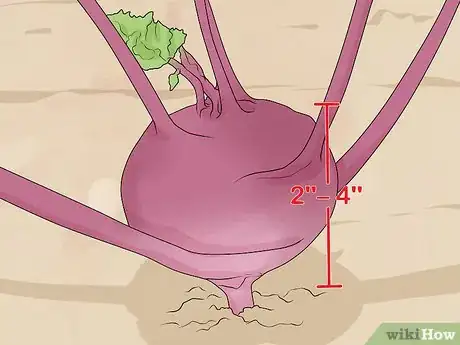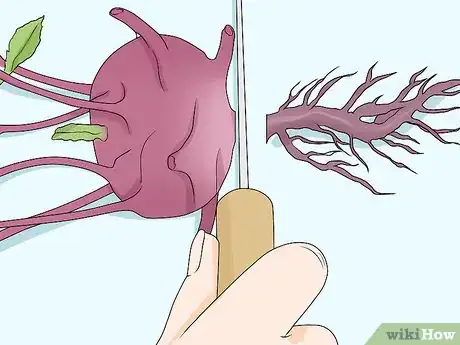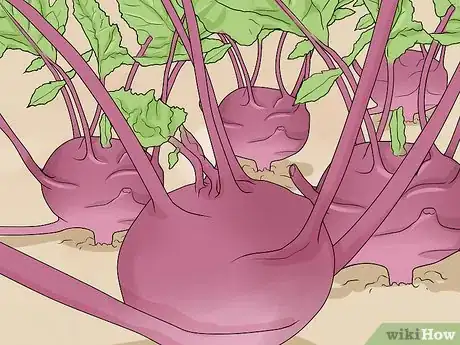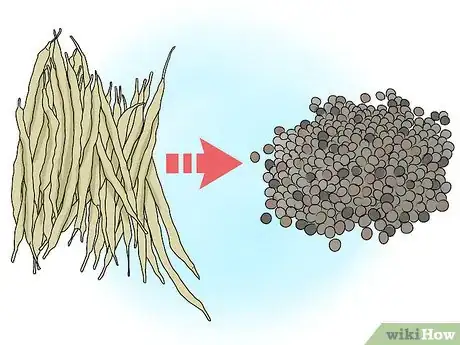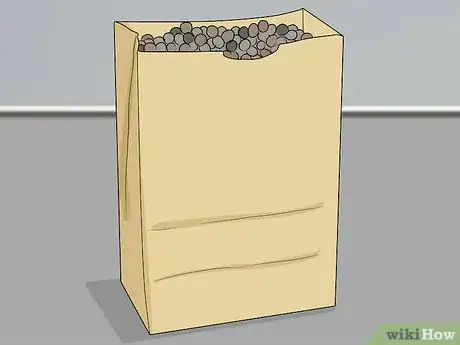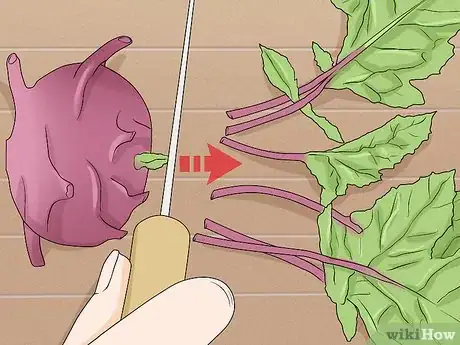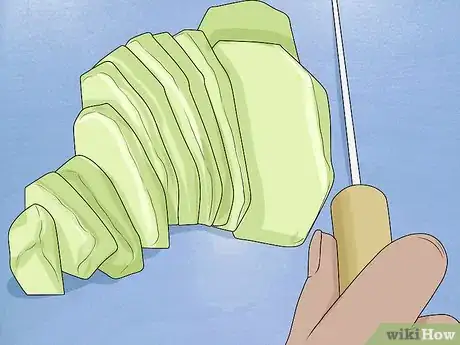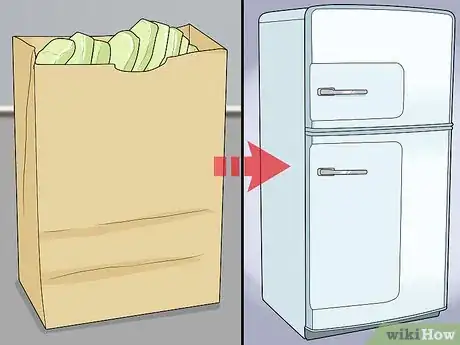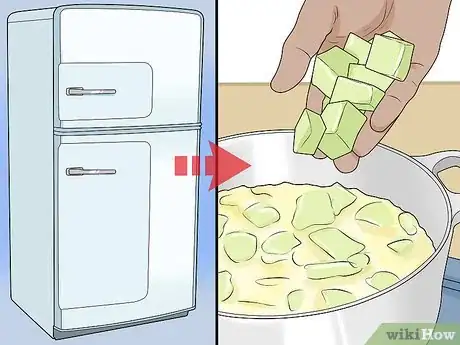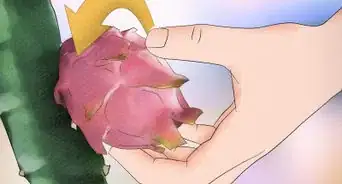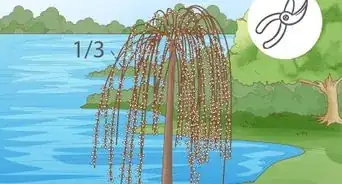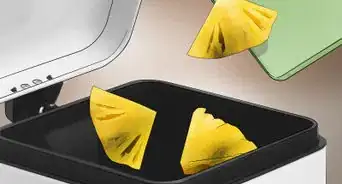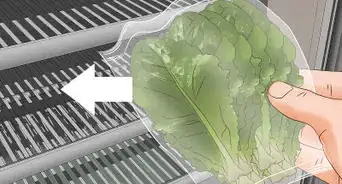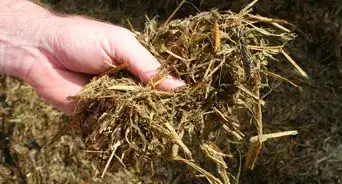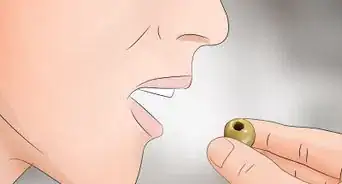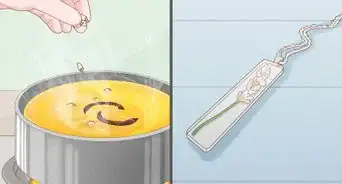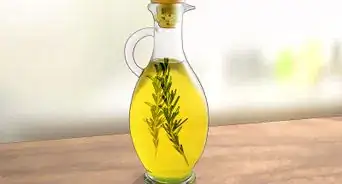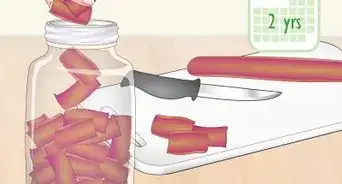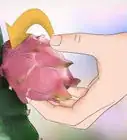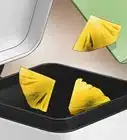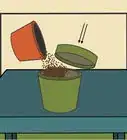This article was co-authored by wikiHow Staff. Our trained team of editors and researchers validate articles for accuracy and comprehensiveness. wikiHow's Content Management Team carefully monitors the work from our editorial staff to ensure that each article is backed by trusted research and meets our high quality standards.
There are 7 references cited in this article, which can be found at the bottom of the page.
This article has been viewed 25,584 times.
Learn more...
Kohlrabi is rapidly growing in popularity. It's known as the apple of the vegetables due to its sweetness, and the German turnip because of its origin. Kohlrabi is not only delicious, but it’s also high in fibre and vitamin C! It’s part of the cabbage family and is very easy to grow. Depending on its variety you can harvest Kohlrabi 40 to 80 days after planting. If you plant Kohlrabi in the right climate and harvest it when it’s small you’ll be able to enjoy the delightful vegetable roasted, raw or in a mash!
Steps
Selecting and Removing Kohlrabi
-
1Harvest your kohlrabi when the bulbs are 2–4 inches (7–10 cm). The smaller bulbs are the sweetest.[1]
- Pick the bulbs that are the size of a golf ball. The bulb sits on the top of the soil so it's easy to check.
- Remove your kohlrabi before they are the size of a tennis ball. The larger the kohlrabi bulb gets, the more woody and tough it is to eat.[2]
-
2Use garden gloves and a serrated knife. Make sure the knife is sharp and clean to cut the Kohlrabi bulb safely.[3] Use gloves to protect your hands.
- A serrated knife is the most effective for harvesting kohlrabi.[4] Sometimes the roots can be tough to remove.
Advertisement -
3Pull the kohlrabi plant out of the soil. To remove the kohlrabi grab the base of the leaves where they connect to the bulb.[5]
- Hold on to the leaves and pull the plant upward. This should remove your kohlrabi plant from the soil. You may need to use a bit of force if your plants have grown bigger.
- Shake off any excess soil from the roots.
-
4Cut the roots off the bulb. Once you have removed the plant, cut off the roots at the base of the bulb with your serrated knife.[6]
-
5Keep the leaves on your kohlrabi bulbs. The bulb is an extension of the leaves.[9] They are edible and can be delicious if harvested at the right moment.
- Kohlrabi leaves grown in colder temperatures can be eaten like cabbage. The leaves may be bitter if your kohlrabi is grown in a warmer climate.[10]
Saving the Seeds
-
1Grow your kohlrabi plant for two years to collect their seeds. Kohlrabi plants are biennial.[11] However, they are usually grown as an annual vegetable.
- Kohlrabi seeds do not grow in the first year.
-
2Save at least 5 kohlrabi plants for seeds.[12] This will ensure that you have enough seeds for future planting.
- Plan whether you want to save seeds when planting in the first year.
- Plant extra kohlrabi if you want to save seeds.
-
3Wait for yellow flowers to grow on your kohlrabi. The flowers are where the seeds grow.[13] The seeds are ready to harvest once the flowers start to turn brown.
- Harvest before the flowers become too mature. They will start to break and attract birds.
-
4
-
5
Using and Storing Kohlrabi
-
1Remove the leaves from the kohlrabi bulb. The leaves are edible and can be cooked like a cabbage or a collard green.[18]
- You can use a clean knife to cut off the leaves or pull them and the will separate from the bulb.
-
2Peel the outside of the kohlrabi bulb. You can eat the peel but it's tough. The white flesh of the kohlrabi is the most delicious.[19]
- Throw the peels into your compost.
-
3Cut your kohlrabi into slices or cubes to eat. Cut the kohlrabi bulb in half and remove the tough core.
-
4Store in your refrigerator for a few weeks. Put your kohlrabi in a plastic bag and store in the vegetable drawer of your fridge.
- Store with its leaves and kohlrabi will last a couple of weeks. Use a perforated bag so the leaves have some air circulating.
- Store your kohlrabi without the leaves and it’ll keep fresh for a couple of months.[22]
-
5Freeze your kohlrabi to add to stews or soups later. Prepare your kohlrabi and store in the freezer to enjoy when you no longer have it growing in your garden.
- Cut your kohlrabi into cubes, removing the tough core.
- Blanch the kohlrabi cubes for 1 minute. Remove them from the heat, drain the water and let the cubes cool.
- Once cooled, place the cooked kohlrabi cubes into a plastic bag and put it into the freezer.
- Remove your frozen kohlrabi when you want to use it to cook in soups, stews and stir-fries. Enjoy your homegrown kohlrabi all year round!
References
- ↑ https://harvesttotable.com/harvest-store-kohlrabi/
- ↑ https://www.youtube.com/watch?v=fSHQYDBstbc
- ↑ https://www.youtube.com/watch?v=fSHQYDBstbc
- ↑ https://harvesttotable.com/harvest-store-kohlrabi/
- ↑ https://www.youtube.com/watch?v=fSHQYDBstbc
- ↑ https://www.youtube.com/watch?v=fSHQYDBstbc
- ↑ https://www.youtube.com/watch?v=fSHQYDBstbc
- ↑ https://www.youtube.com/watch?v=fSHQYDBstbc
- ↑ https://www.youtube.com/watch?v=fSHQYDBstbc
- ↑ https://www.motherearthnews.com/organic-gardening/vegetables/growing-kohlrabi-zw0z1401zsto
- ↑ https://www.seedsavers.org/grow-kohlrabi
- ↑ https://www.seedsavers.org/grow-kohlrabi
- ↑ https://www.motherearthnews.com/organic-gardening/vegetables/growing-kohlrabi-zw0z1401zsto
- ↑ https://www.motherearthnews.com/organic-gardening/vegetables/growing-kohlrabi-zw0z1401zsto
- ↑ https://www.seedsavers.org/grow-kohlrabi
- ↑ https://www.seedsavers.org/grow-kohlrabi
- ↑ https://www.motherearthnews.com/organic-gardening/vegetables/growing-kohlrabi-zw0z1401zsto
- ↑ https://bonnieplants.com/growing/growing-kohlrabi/
- ↑ https://www.thekitchn.com/how-to-cut-up-kohlrabi-cooking-lessons-from-the-kitchn-205838
- ↑ https://getbusygardening.com/10-ways-use-kohlrabi-fresh-garden/
- ↑ https://getbusygardening.com/10-ways-use-kohlrabi-fresh-garden/
- ↑ https://harvesttotable.com/harvest-store-kohlrabi/
